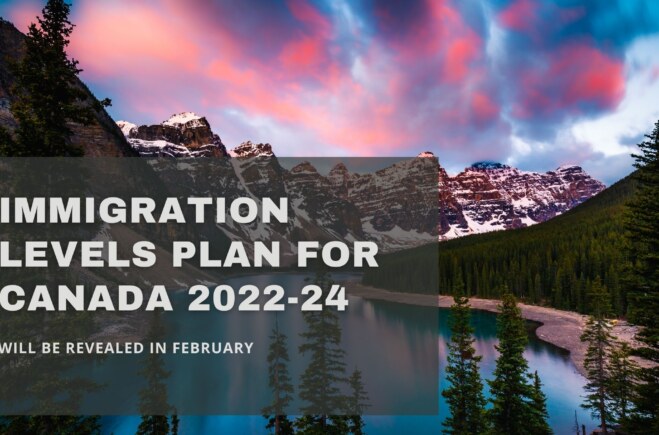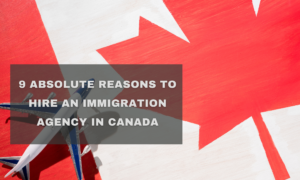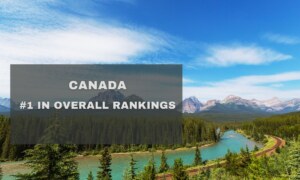Canada Immigration Plan
In the latest update on Canadian immigration, the country is all set to announce its new immigration target for the years 2022-2024. The announcement was set to release in November 2021 but could not due to its September elections.
These immigration level plans for the years 2022-2024 will be announced on February 10, 2022.
Notice – Supplementary Information for the 2021-2023 Canada Immigration Levels Plan
October 30, 2020—Ottawa—Following the tabling of the 2020 Annual Report to Parliament on Immigration, Immigration, Refugees and Citizenship Canada (IRCC) is pleased to release details on the Government of Canada’s Immigration Levels Plan for 2021-2023. Canada aims to welcome 401,000 new permanent residents in 2021, 411,000 in 2022, and 421,000 in 2023.
2021-2023 Canada Immigration Levels Plan
| Immigrant Category | 2021 | 2022Footnote 9 | 2023Footnote 9 | |||||||
|---|---|---|---|---|---|---|---|---|---|---|
| Target | Low Range | High Range | Target | Low Range | High Range | Target | Low Range | High Range | ||
| Overall Planned Permanent Resident Admissions | 401,000 | 300,000 | 410,000 | 411,000 | 320,000 | 420,000 | 421,000 | 330,000 | 430,000 | |
| Economic | Federal High SkilledFootnote 1 | 108,500 | 81,000 | 110,250 | 110,500 | 96,250 | 112,900 | 113,750 | 100,000 | 114,500 |
| Federal BusinessFootnote 2 | 1,000 | 400 | 1,250 | 1,000 | 250 | 1,250 | 1,000 | 500 | 1,250 | |
| Economic Pilots: CaregiversFootnote 3; Agri-Food Pilot; Rural and Northern Immigration Pilot | 8,500 | 4,900 | 9,250 | 10,000 | 4,500 | 10,500 | 10,250 | 4,500 | 11,000 | |
| Atlantic Immigration Pilot ProgramFootnote 4 | 6,000 | 3,300 | 6,250 | 6,250 | 3,000 | 6,750 | 6,500 | 3,500 | 6,750 | |
| Provincial Nominee Program | 80,800 | 64,000 | 81,500 | 81,500 | 63,600 | 82,500 | 83,000 | 65,000 | 84,000 | |
| Quebec Skilled Workers and BusinessFootnote 5 | See the Quebec immigration plan | To be determined | To be determined | |||||||
| Total EconomicFootnote 6 | 232,500 | 180,500 | 237,000 | 241,500 | 199,000 | 247,000 | 249,500 | 207,000 | 253,500 | |
| Family | Spouses, Partners and Children | 80,000 | 61,000 | 81,000 | 80,000 | 60,000 | 81,000 | 81,000 | 60,000 | 82,000 |
| Parents and Grandparents | 23,500 | 15,000 | 24,000 | 23,500 | 14,000 | 24,000 | 23,500 | 14,000 | 24,000 | |
| Total Family | 103,500 | 76,000 | 105,000 | 103,500 | 74,000 | 105,000 | 104,500 | 74,000 | 106,000 | |
| Refugees and Protected Persons | Protected Persons in Canada and Dependents Abroad | 23,500 | 17,000 | 25,000 | 24,500 | 19,000 | 25,000 | 25,000 | 19,500 | 25,500 |
| Resettled Refugees – Government-AssistedFootnote 7 | 12,500 | 7,500 | 13,000 | 12,500 | 7,500 | 13,000 | 12,500 | 8,400 | 13,000 | |
| Resettled Refugees – Privately Sponsored | 22,500 | 14,900 | 23,000 | 22,500 | 15,400 | 23,000 | 22,500 | 15,500 | 23,000 | |
| Resettled Refugees – Blended Visa Office-Referred | 1,000 | 100 | 1,000 | 1,000 | 100 | 1,000 | 1,000 | 100 | 1,000 | |
| Total Refugees and Protected Persons | 59,500 | 39,500 | 62,000 | 60,500 | 42,000 | 62,000 | 61,000 | 43,500 | 62,500 | |
| Humanitarian and Other | Total Humanitarian & Compassionate and OtherFootnote 8 | 5,500 | 4,000 | 6,000 | 5,500 | 5,000 | 6,000 | 6,000 | 5,500 | 8,000 |
| French-speaking immigration admissions necessary to meet objective in Francophone Immigration Strategy (PDF, 582 KB)Footnote 10 | 4.4% of total admissions outside Quebec | 12,144 | 16,544 |
Source: canada.ca

Sean Fraser
Minister of Immigration, Refugees and Citizenship of Canada
Speaking with Bloomberg, the minister said he is prepared to increase Canada’s immigration levels if it is necessary to address labor shortages. Canada is currently experiencing significant job shortages in large part due to fewer immigrants arriving from overseas amid the pandemic.
Sean Fraser is not satisfied even though IRCC landed 46,000 immigrants in Canada. He also stated that Canada is taking steps to achieve its 401,000 newcomer target in 2021. IRCC (Immigration, Refugees and Citizenship Canada) shows that 46,315 new permanent residents landed in October, and in September, 45,000 immigrants completed their landings.
——————————————————————–
Do you want to live in Saskatchewan?
We can help!
Immigrate to Canada: Express Entry / PNP / Sponsorship / Blog / Employer Services / Recruitment / Business Class Immigration / Contact Us / Canada Jobs / Canada Immigration Forum




Leave a comment